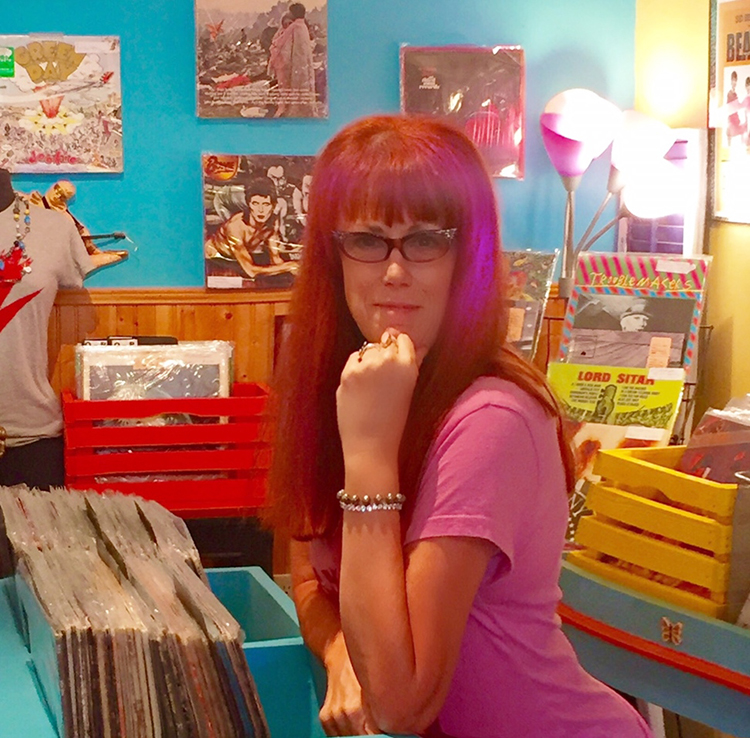Vinyl in Vogue
Guest columnist Suzi Walters (Identity Vintage, in Old Town) gives us a primer for beginning collectors of vintage vinyl records.
- story and photos by Suzi Walters
In addition to hearing the material sequenced as the artist intended, there is cover art, sometimes in full gatefold format. There are liner notes, dedications, lyric sheets, and cryptic messages etched in the vinyl dead wax. Collections of songs on a record offer a cohesive glimpse of a musical artist at a certain time in his career. To own the art in this format is an experience as the artist originally intended.
For the casual music lover there are represses of most artists’ work easily available at many mainstream retail outlets. For the collector that resides in many of us, the vinyl hunt in the secondary market is a hobby that is fun, challenging, and a constant learning experience.
The basics of record collecting are quite simple — the most important being buy what you love. If you find joy in a certain artist, that truly defines the value of the object. However, to get the most bang for your buck, it is helpful to do your homework before the hunt. As a book collector hopes to acquire a first edition of a beloved volume, for a vinyl collector a mint condition first pressing is the most desirable version. With millions of records available out in the secondary marketplace, this can get confusing.
Determining an original pressing can be quite the task, but there are key things to look for. Familiarize yourself with the label the artist originally recorded under. Many times a repress is on a different label, as over the years smaller labels were absorbed by larger companies.
A perfect example of this would be the Beatles, whose discography has been repressed many times under labels like Parlophone, Capital, and Apple, as well as many import labels. To help sort this all out, there are many online databases available where one can enter in the record catalog number. This may help ascertain the generation of pressing. The catalog number is usually found on the top right corner of the back of an album’s cover.
Album cover art is also a key clue, as many represses will have subtle differences in the artwork. Differences may also exist on album inserts such as lyric sheets.
The most important thing is, of course, the music itself. Secondhand and vintage vinyl should be clean, glossy, and appear flat. Imperfections to the eye do not necessarily mean the record is unplayable, though. Unless new and unopened, most used vinyl will have visual flaws. Rule of thumb is to run your finger over these imperfections; if you can feel the flaw, your turntable stylus will likely react to it as well. Collecting records is akin to collecting an art form, the fun in it being that there is something for everyone. For the serious collector, there are box sets, limited editions, picture discs, colored vinyl, split colored vinyl, imports, and out of print pressings. For the casual collector, vintage and second hand vinyl is not hard to find, and the hunt is an absolute blast. Whether taking a joyful ride down memory lane or discovering tunes and soundscapes that inspire and entertain you, the real truth is that records aren’t just back, they’re here to stay! Comments are closed.
|
Categories
All
Archives
July 2024
|
Shoofly Magazine Partners
Our Shoofly Partners are local businesses and organizations who share our mission to enrich community life in Bay St. Louis, Waveland, Diamondhead and Pass Christian. These are limited in number to maximize visibility. Email us now to become a Shoofly Partner!

































 RSS Feed
RSS Feed























